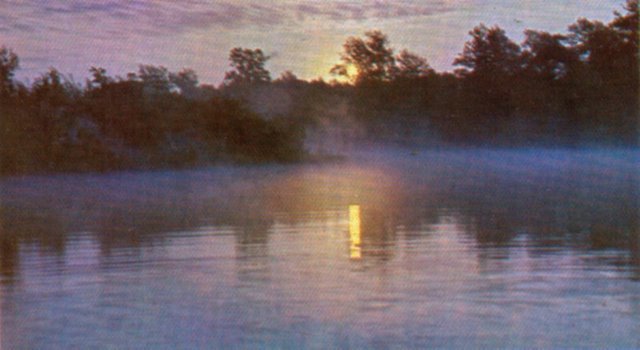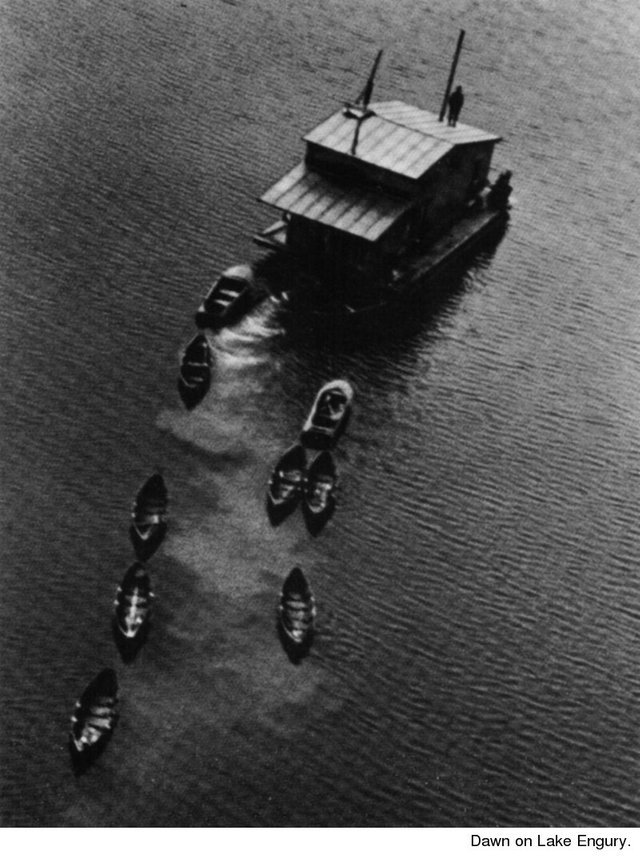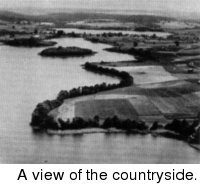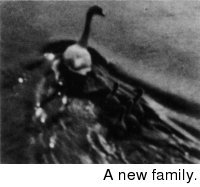Flying Time: Twenty Minutes (featuring Vasily Peskov as author)
"Do you want to catch up with that kite?"
I knew he was joking. But then the helicopter veered and we were flying in the same direction as the bird, both of us low over the woods. I could count the feathers on its outspread wings, ruffled by the prop wash. The kite turned its head anxiously. I could see its black, beady eye. I might have touched it if we dropped just a few more inches. The pilot maintained the same distance between us till we slipped over the pointed tops of the firs and the bushy crowns of the birches. The kite tired of our company, dipped its wings and was gone.

It was early morning. The people on the lone forest farmsteads were still asleep. At this time of day wild animals are not afraid to come out into the open, which gave us a chance to observe scenes we would not otherwise have witnessed. A group of black deer were prancing about by a deserted barn. We did a semicircle to get some better shots, but by then all we saw were four black rumps streaking off. A lone elk stood in a young fir grove. A fox on the sandy bank of a small swamp was gnawing on something. It raised its head, barked and darted into the reeds. We saw the dotted line of its tracks and the remains of its breakfast on the wet sand.
We removed the door, strapped ourselves securely to the handrails and could now lean out and over safely. The life of the forest passed forty meters below us, with every path and clearing and even the water-filled tracks of elks distinctly etched, it seemed that if we but looked more closely we would spot the mushrooms. Apples shone like white lanterns among the dark leaves of an orchard on a forest farmstead. Panic-stricken white hens dashed pell-mell into the bushes, having probably taken the helicopter for a huge, famished kite.

Lake Engury is located a hundred kilometers from Riga. It is a strip of shallow fresh water in the coastal forests. From above the water is monotonously dull. Here and there on the sand bars large fish become frightened and dart away, leaving dappled trails on the surface. Then something caught our eye. It was a strange geometrical pattern produced by clumps of cattails and sedge. They were growing in perfect cirles, as if some great hand had taken a compass, made these large and small circles and then planted the grasses. I rowed among the green saucers on the lake, but from below you are unaware of the mysterious pattern. Now, however, what we saw were numerous dark discs floating off to the horizon. What was the answer to this mystery?

There are a great multitude of birds here: ducks of many species, swans, gulls and snipes. Floating ducks dotted the surface. They, too, must have taken us for a kite, for they rose in a hreat flock and did not fly, but seemed to be running across the water into the rushes, leaving strips of watery tracks in the duckweed on the surface.
Perhaps, since swans have fewer enemies, they were indifferent to the helicopter. Two swans were teaching their cygnets to ferret for food on the bottom. We dropped lower and started taking pictures. They were not in the least perturbed and went on feeding. A lone swan gave flight. We could see its strong feet assisting its wings. The large splash each foot made as it hit the water looked as if someone was tossing rocks in the bird's wake.

And here was the Ark. A wooden houseboat trailing several strings of tenders appeared from beyond a wooded bend. We would have wondered what it was had I not lived on the houseboat for several days three years before. I now waved, as to an old friend. The inhabitants of the Ark had just awoken. Someone was waving a towel at us, someone else stood sleepily on the roof, watching our progress.
Scientists have many observation posts all over the globe. There are great observatories, huge proton synchrotrons, nuclear reactors and laboratory ships at sea. There is also a tiny houseboat trailing a dozen rowboats, with a kerosene stove inside on which to warm water for the incubator and cook buckwheat for dinner. In spring duck eggs are brought to the houseboat in the dinghies. The incubator in the Ark's hold hatches the wild ducklings. Each one is banded and returned to its mother, who, in the interim, has been sitting on wooden eggs left in the nest by the ornithologists.
There is an old mystery that has always interested man: how do birds cover thousands of miles and find their way to the same nesting grounds? What compass guides these ducks from Africa back to Lake Engury, for instance? People are searching for the answer. And each summer this tub with its tail of tenders, one of science's tiny outposts, is on duty at the bird lake.